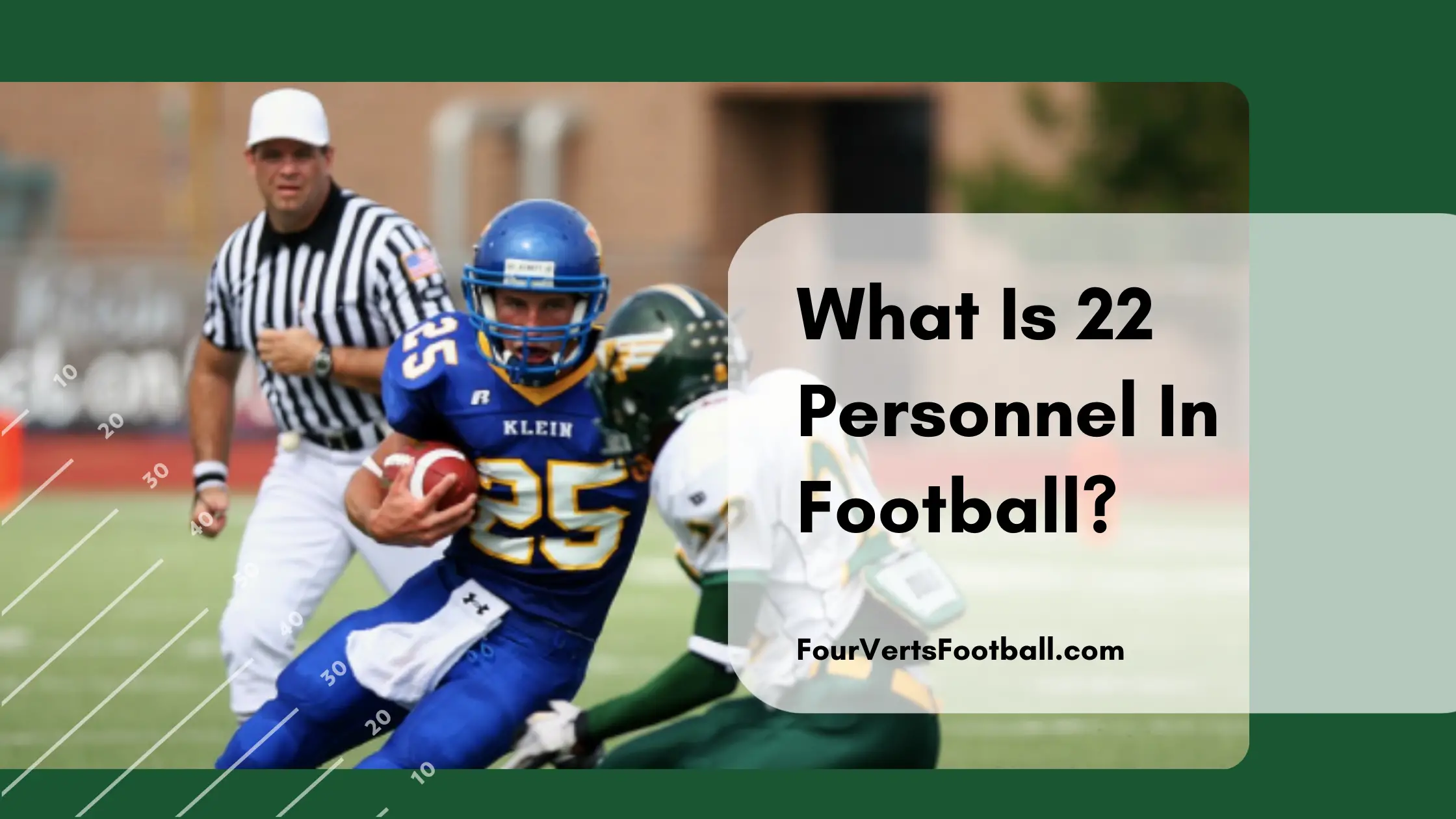22 Personnel in football refers to an offensive grouping that includes two running backs, two tight ends, and two wide receivers. This is a fairly balanced personnel group and can be used in both the pass and run game.
Understanding personnel groupings in football may seem confusing but it is actually quite a straightforward process.
The number that comes before each personnel grouping is displaying the number of tight ends and running backs that are going to be on the field.
For example, in 22 personnel there are going to be two tight ends and two running backs. The first digit displays how many running backs are on the field and the second digit displays how many tight ends are on the field.
If it were 13 personnel there would be one running back and three tight ends.
Additionally, this numbering system will also allow you to find out the number of receivers in the formation.
We already know there are going to be five offensive linemen and one quarterback in the vast majority of personnel groupings. We also know the number of tight ends and running backs in the formation.
Since there are going to be eleven players in the offense we can subtract the o-line, quarterback, tight ends, and running backs from eleven to get the number of receivers.
In 22 personnel there are five linemen, one QB, two RBs, two TEs. This brings you to a total of ten players. This means there is one wide receiver in this personnel grouping.
This method of elimination can be used with any numbered personnel grouping to determine how many players at each position are on the field.
Benefits Of 22 Personnel
Now that you understand what 22 personnel is in football it is time to break down what this grouping is used for. Below we will cover some of the biggest benefits of running 22 personnel in football.
Power Blocking With The Fullback
One benefit of using 22 personnel in football is that you are able to run power runs with the fullback. In this personnel grouping, there are going to be two backs in the backfield.
Oftentimes instead of two running backs, this formation will feature a running back and a fullback.
The full-back will then act as a lead blocker on rushing plays. On these plays, the offensive lineman will first look to open a hole for the running back.
Once the hole is created the fullback will go through first and block the defender waiting to make the tackle. This will give the running back an easier opportunity to get to the second level.
The lead blocker paired with the two tight ends means that this personnel grouping can be quite effective on the ground.
Tight End Receiving Mismatch
Another benefit of this formation is that it can generate receiving mismatches for your tight end. When playing with 22 personnel the offense is going to have a fair amount of larger players on the field with the two tight ends and five offensive linemen.
In order to combat this, the defense will often bring on larger players so they will be able to stop the run consistently. Though this often works, it usually means the defense is going to be a bit slower.
This will often create mismatches between tight ends and linebackers. These larger linebackers will often not have the speed to keep up with modern-day tight ends.
This can lead to easy passes for the personnel group as the defenders will be unable to keep up with the skill positions.
Play Action Potential
Due to the larger personnel used in this package, it makes a great option for play actions. Looking at this formation teams are usually expecting the offense to run.
This paired with the fact the defense will usually put their larger players on the field means that passing can be quite successful.
On these play-action passes, 22 personnel can use the tight ends as extra blockers or send them out on routes so the quarterback will have several options to choose from.

